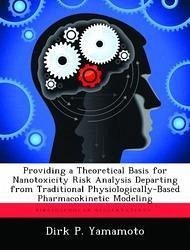Novel properties of engineered nanoparticles that make them attractive may also present unique exposure risks. The traditional physiologically-based pharmacokinetic (PBPK) modeling assumption of instantaneous equilibration likely does not apply to nanoparticles. This simulation-based research begins with development of a model that includes di usion, active transport, and carrier mediated transport. Eigenvalue analysis was used to examine model behavior to focus future research. Results show that cellular transport processes greatly a ect biokinetics of nanoparticles. The new paradigm established by this research leverages traditional in vitro, in vivo, and PBPK modeling, but includes area under the curve to bridge animal testing results to humans. This allows assessment of risk and assists in setting appropriate exposure limits. The model provides critical understanding of nanoparticle biokinetics and allows estimation of total exposure. This e ort highlights future research needs and demonstrates how modeling can be used as a tool to advance nanoparticle risk assessment.








